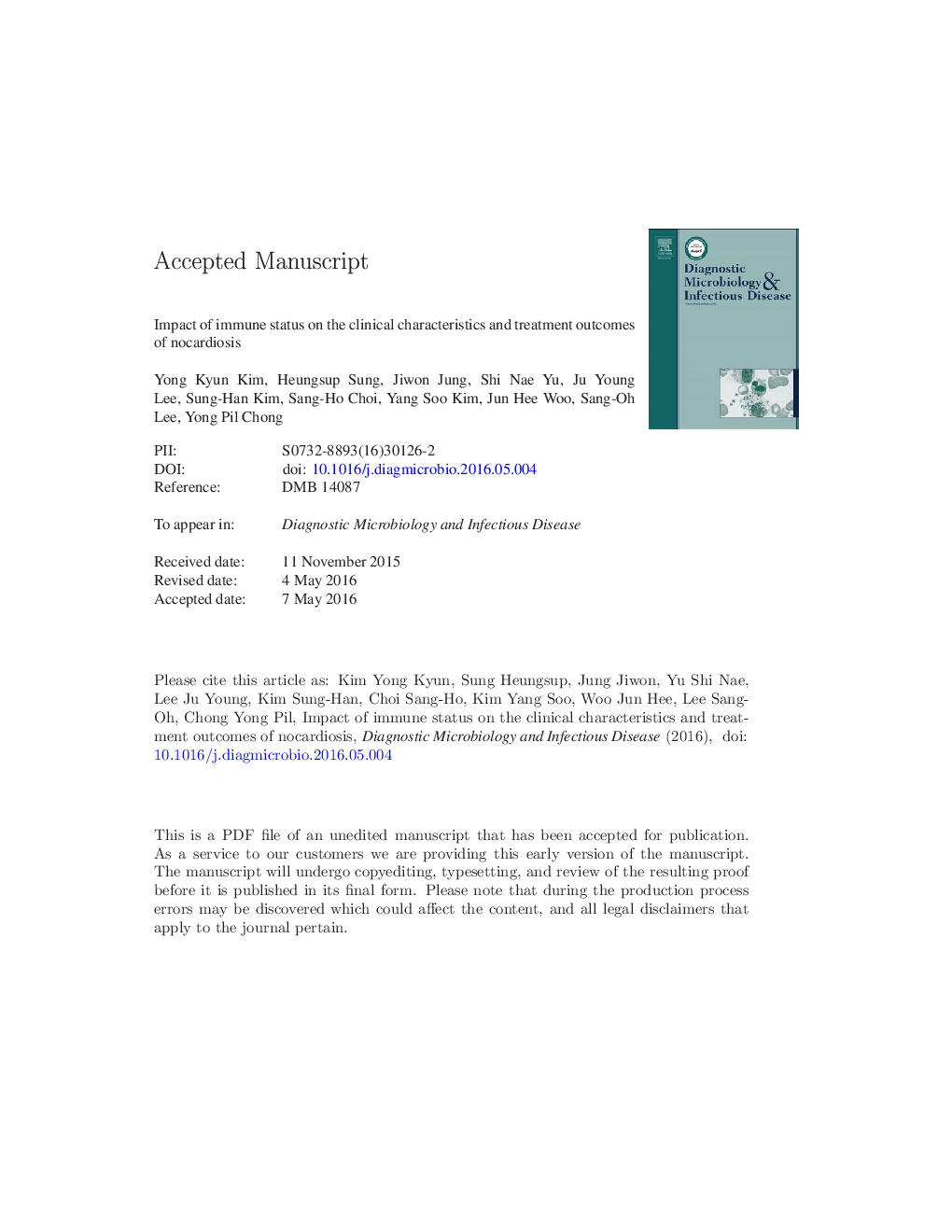| Article ID | Journal | Published Year | Pages | File Type |
|---|---|---|---|---|
| 6115543 | Diagnostic Microbiology and Infectious Disease | 2016 | 30 Pages |
Abstract
Nocardiosis occurs in both immunocompromised and immunocompetent patients. We aimed to assess how its characteristics differ depending on patients' immune status. Of a total of 54 patients with culture-proven nocardiosis diagnosed over 13 years, 18 (33%) were immunocompetent. Half of immunocompetent patients had chronic lung disease and were not receiving systemic corticosteroid. There were no significant differences in clinical, radiographic, and microbiologic characteristics, and treatment outcomes according to immune status, except that pulmonary cavitation (47% vs. 8%) and coexisting infections (17% vs. 0%) were more frequent in immunocompromised hosts. Nocardia farcinica, the most commonly identified isolates at the species level (51%), was highly susceptible to trimethoprim-sulfamethoxazole (100%) and highly resistant to ceftriaxone (94%). Nocardiosis should be considered in differential diagnosis of pneumonia, brain abscess, or soft tissue infection that does not respond to conventional antibiotic therapy such as ceftriaxone, regardless of whether the patient is immunocompromised or not.
Related Topics
Life Sciences
Immunology and Microbiology
Applied Microbiology and Biotechnology
Authors
Yong Kyun Kim, Heungsup Sung, Jiwon Jung, Shi Nae Yu, Ju Young Lee, Sung-Han Kim, Sang-Ho Choi, Yang Soo Kim, Jun Hee Woo, Sang-Oh Lee, Yong Pil Chong,
